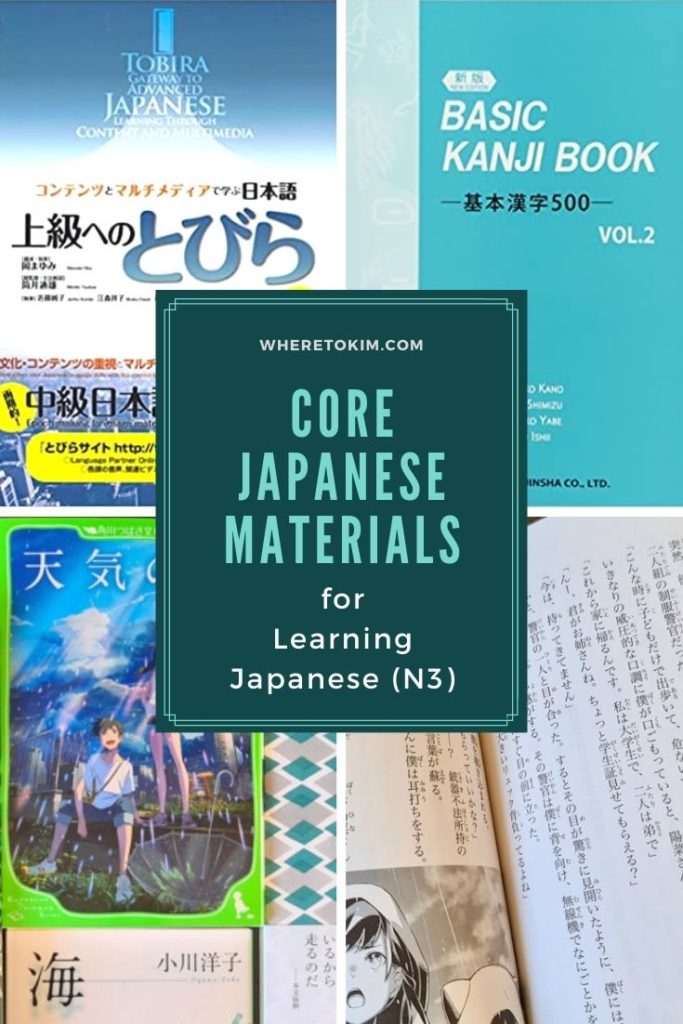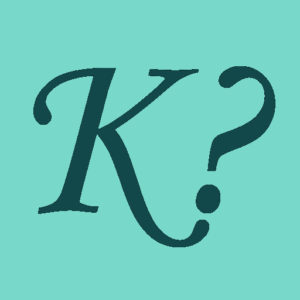What Japanese learning language resources will take you from JLPT N4 to N3? Continue your studies with these textbooks, native materials, and websites.
I wrote a comprehensive list for N5 and N4 in an earlier blog post and I still use many of the materials mentioned in that post. To progress to the next level, I have added some N3-ish textbooks and materials. I will give you tips on how to learn at this stage from my personal experience. My learning method will not be suitable for everyone, but you will understand why I do it this way if you know my reasons for learning Japanese. If your goal is different, you can still use the resources in this list for the reading comprehension part of your journey.
Table of Contents
Personal Story
Just a few months after I wrote the N5 and N4 language learning materials post, the unexpected happened: I suddenly took my Japanese language studies more seriously and made it to the next level. I am now ready to pursue the N3 language proficiency level.
And by pursuing N3, I mean achieving a language proficiency comparable to what is tested on a JLPT N3 exam. I don’t plan to take any tests because I have no need for a certificate that proves my Japanese level. My reasons for learning the Japanese language are as follows.
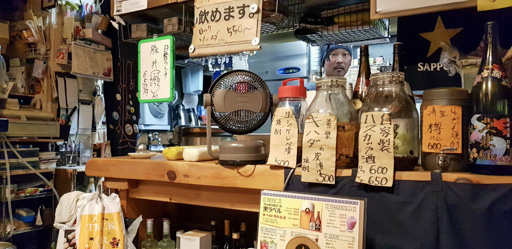
- Being able to read Japanese literature from the source. I want to experience complete immersion; something I can only achieve by reading books in the original language. Moreover, not every book by authors I am interested in will be translated. The number of books with English, Dutch, German or French translations increases every year, but the choice of those that make it to my bookshelf is unfortunately not up to me. Time to change that.
- The wow feeling of mastering another language and being able to decipher a text that most people can’t make sense of.
- Understanding at least the easy parts of conversations in Japanese TV shows. It’s always nice when you can still follow what’s going on if you look away from the subtitles.
- And the main reason – my personal pet peeve and a source of lifelong frustration – making sense of the Japanese menu in restaurants in Japan. I have visited Japan twice, first in 2015 (Highlights of Japan) and then again in 2019 (Kyushu and Yakushima). On my first trip, it was really hard to order anything at all because there were no English-language menus in the offbeat places I visited and the restaurant staff often didn’t speak English at all. Google translate was the way to go then. On my second trip, even some of the offbeat places suddenly had menus in English, but they were often shortened versions of the full Japanese menu. Don’t get me wrong, I really appreciated these menus, but they led to some frustration. So I vowed that on my next trip to Japan I would be able to read the Japanese menu. Covid made sure I had plenty of time to work on it. Although I haven’t made any plans yet to master reading Japanese handwriting. Step by step.
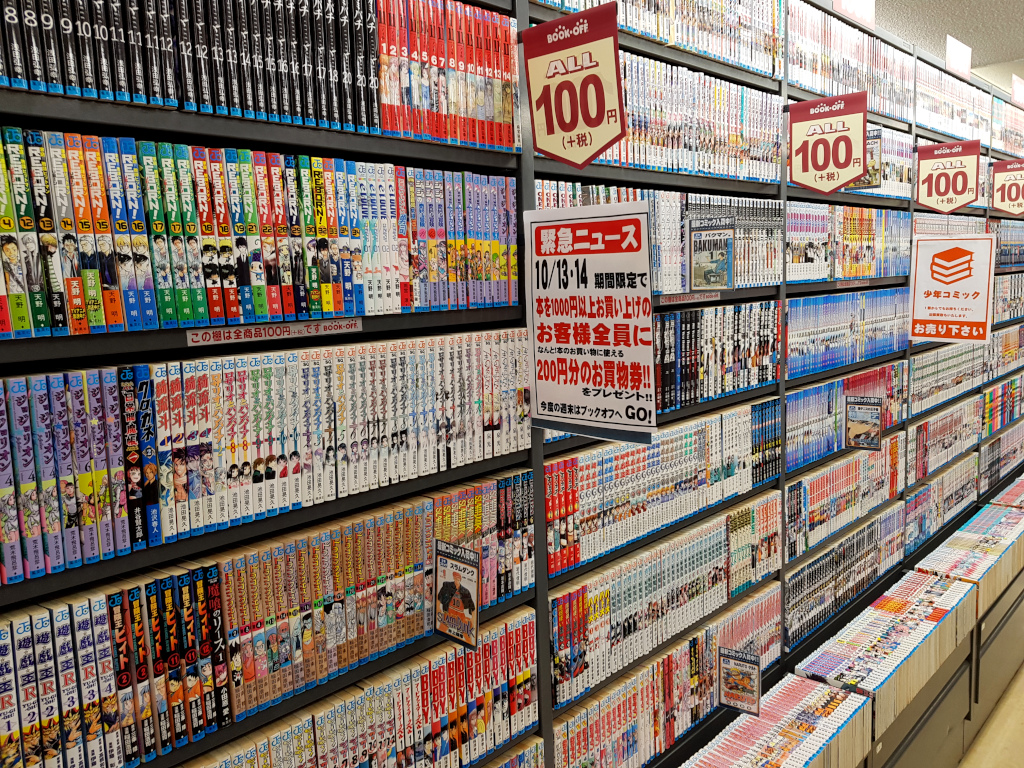
In the past few months I finished Genki 1 and Genki 2, my Japanese textbooks in Korean and made my way through Basic Kanji Book Vol. 1. The above sounds like I went incredibly fast, but that’s not true. I did half of Genki 1 in 2015 and then did the same half again in the summer of 2021. Last summer I also read Tae Kim’s grammar and memorized the first 150 or so Kanji/Hanja for both Japanese and Korean. So I already had some passive knowledge that helped me move through the material faster. Now I find myself in new territory and I am excited to continue my learning journey. I’m moving full speed ahead to reading novels with full furigana or only furigana for the more difficult Kanji. With a few secret glimpses into novels without furigana: Yoko Ogawa’s The Sea (海) and Osamu Dazai’s Run, Melos! (走れメロス), I’m looking at you.
Japanese Textbooks
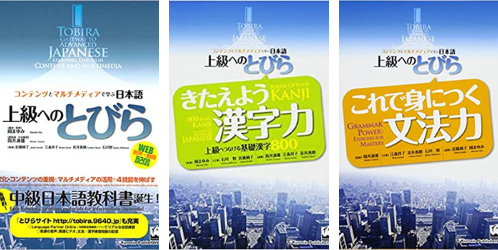
For N3, Tobira Gateway to Advanced Japanese is the way to go. Some consider this a big step up from Genki I and II because the texts are longer. I, however, found the change very refreshing. If you’ve been practicing with reading Japanese texts at the N5 and N4 level – either Japanese Graded Readers or something more difficult such as Harry Potter – the wall of text won’t scare you. I actually find most texts easier because the same grammar point can appear several times in a longer text.
In this textbook, you will find a wide variety of texts, ranging from informational texts to conversations, and from formal language to informal language. Following the texts is an overview of the vocabulary and grammar used in this chapter and some exercises. It is up to you to decide whether to study the vocabulary and grammar before or after reading the texts.
You can buy the supplementary Kanji book (Tobira Power up your Kanji) for more Kanji practice. In this book, you will learn about 800 Kanji: the 297 that the book assumes you already know and 503 others introduced in Tobira Gateway to Advanced Japanese. If you use other materials to learn Kanji, for example Wanikani or Basic Kanji Book Vol. I and Vol. II, the first few chapters will go smoothly because you already know many characters. This does not mean that these chapters are not useful: practicing writing kanji with different materials will only help you to memorize the Kanji. For me, it is absolutely necessary to write the Kanji as well, because only then do I look at the Kanji closely enough to be able to distinguish them from similar characters when I encounter them in texts.
More Kanji Focus
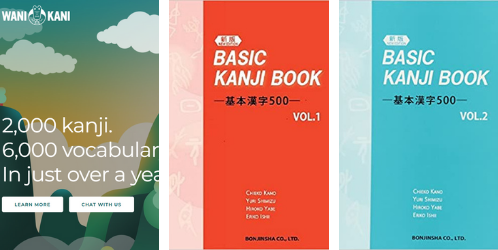
In my previous blog post about N5 and N4, I mentioned that I had quit Wanikani. However, after focusing on grammar for a while, I again found myself needing the SRS system that Wanikani uses to help you learn Kanji. I was off to a rough start because I was welcomed by the 12 levels of vocabulary I had learned 7 years ago, but after a month I regained control and started making progress again. Thanks to Wanikani and Basic Kanji Book Vol. I (see next), I was able to start reading native Japanese materials at a better speed than before.
In Basic Kanji Book Vol. I and Vol. II, you’ll find writing exercises and repetitions that help you memorize the Kanji better. What I like about these books is the grouping of Kanji: they are often grouped by meaning. This is very helpful if, for example, you have trouble remembering which Kanji for place/room/building is used in which words.
For me, it’s not a problem anymore since I own the books, but I still wonder if the high price of the books makes them worth buying. The main issue is that Vol. 1 and Vol. 2 cover about 250 Kanji each. I appreciate them as another way to practice what I have already learned, but maybe they are not necessary because you can practice the same Kanji through other sources.
Kanji and Vocabulary Dictionaries
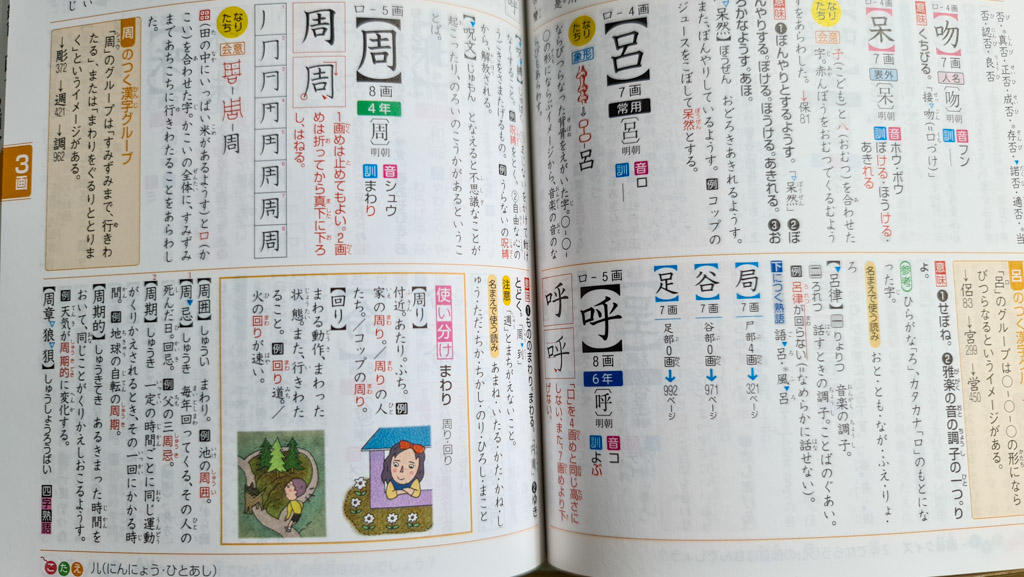
I still use the same resources as I did for N5 and N4 because I chose books and apps that cover all JLPT levels from the start.
I have a Kanji dictionary (Kanji dictionary that Japanese children use in elementary school) that I value very much because of its depth. This book might not be for everyone because it does not contain any English so the initial learning curve before you can use it comfortably is very steep. I quite like this book as it helps with immersion and forces me to read Japanese. Also, it is very comprehensive and gives more information than books meant for foreigners. If you do prefer a book in English, check out Kanji Dictionary for Foreigners Learning Japanese 2500 N5 to N1.
Whenever I come across a Kanji or vocabulary word I don’t know and my paper dictionary is nowhere near, I look it up in the WWWJDIC dictionary app (for Android) on my phone. In this app, you can sketch the Kanji and get the meaning, stroke order, and words in which it is frequently used. I have tried many other apps, but I keep coming back to this dictionary. Unfortunately, this recommendation is not of much use to those of you without Android phones. Although I prefer to use physical books for many other things, I always look up vocabulary on my phone because it is faster and more flexible.
In the Obenkyo app (Android), you can look up Kanji by JLPT level and find out all the basic information you need to learn about this Kanji. It also has tests that will help you remember them.
Japanese Grammar
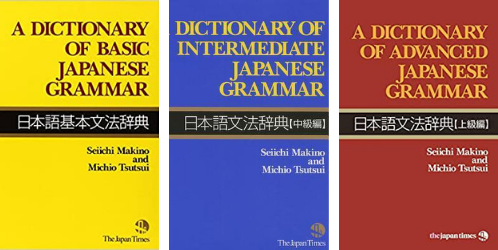
The Dictionaries of Japanese Grammar series consist of A Dictionary of Basic Japanese Grammar, A Dictionary of Intermediate Japanese Grammar and A Dictionary of Advanced Japanese Grammar.
These books give the best general overview of Japanese grammar. Since you are now studying at N3 level, it is time to move to the Intermediate book. This is the book I would buy if I didn’t already have a Japanese grammar book in Korean.
I supplement my grammar book with two free online resources that go into more depth explaining individual grammar points.
The first is Imabi. For each grammar point you look up, you can read about usage, spelling, contractions, and many example sentences. At this level, there is probably more information than you can use, but this does mean that this resource scales very well. If you are low on funds, try this free online resource first! The only downside I could find is that it might take a while to figure out which lesson you need to read. The grammar points are broken down into skill levels, but that doesn’t mean the lesson you are looking for is where you expect it to be.
Another useful free online resource is Wasabi’s Online Japanese Grammar Reference. This grammar resource is less comprehensive than Imabi, but what it does very well is group similar grammar points together based on their usage. For example, you can study the grammar for quotation or judgments and make progress in learning the nuances of each form.
Reading Practice
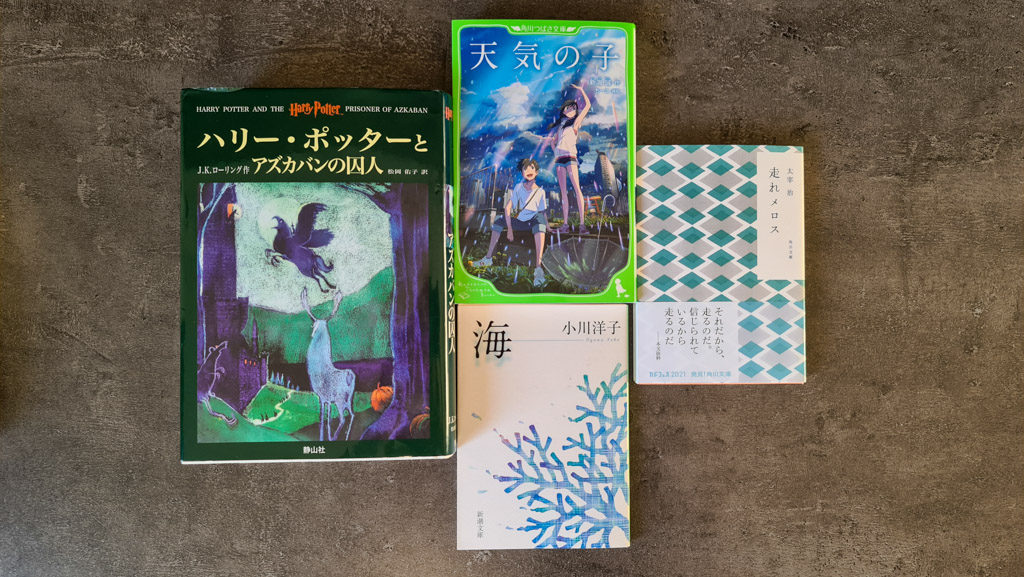
When I was at N5 and N4 level, I read Shirokuma Cafe and Japanese Graded Readers. I also own some other manga of which I occasionally read a few pages. I have now switched to Japanese books for children and young adults. I will share my book selection, but feel free to choose anything else that interests you. The basic idea is as follows: find a book with an uncomplicated story that uses furigana and another book with less furigana and a bit more complicated sentences. After N3 you can choose your first book without furigana.
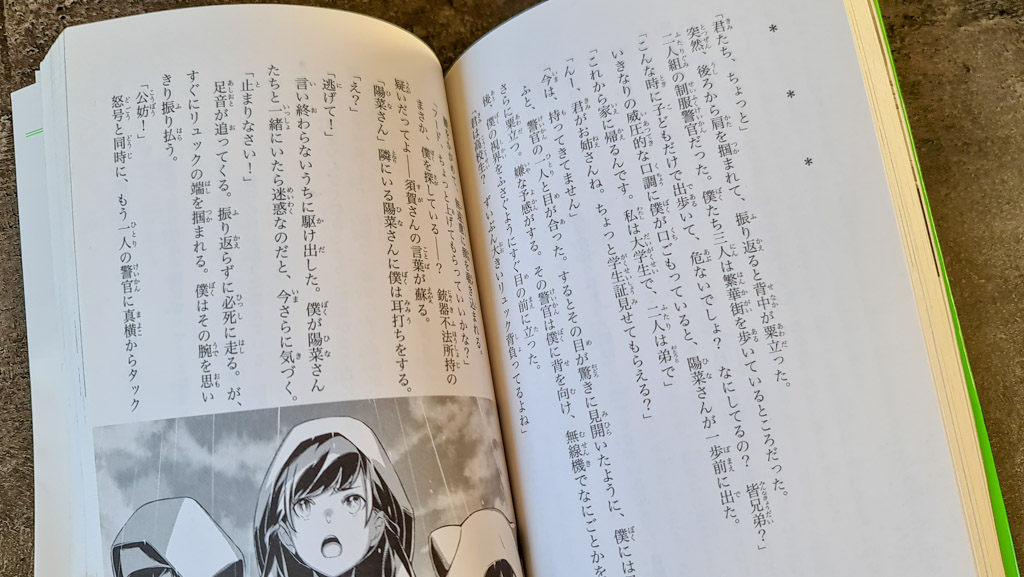
For the first book, I chose the full furigana edition of Tenki no Ko (天気の子). This is a light novel that was also made into a film. Since almost all the kanji are accompanied by furigana, you can start reading it after N4 level. The sentences are easier than in Harry Potter (see the next paragraph) and the words used are common in everyday life. Even before I started Tobira Gateway to Advanced Japanese, I could understand the story without looking up words. Of course, I will look up many words because I want to learn vocabulary, but I will also do reading sessions where I do not look up words. You can find the furigana edition of 天気の子 on Amazon JP (physical), Book Walker (digital) or Verasia (physical).
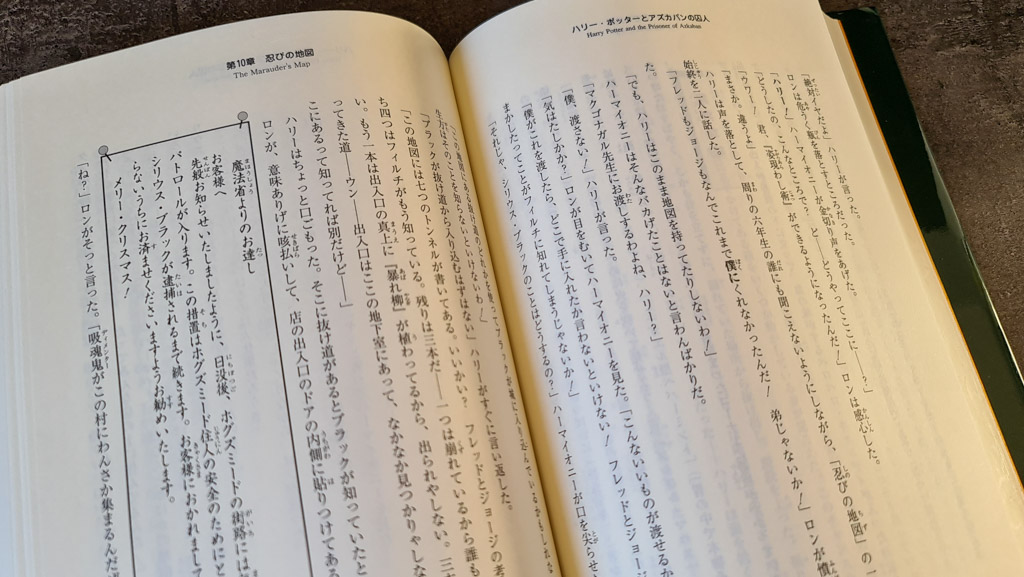
My choice for a book with less furigana is the translation of Harry Potter and the Prisoner of Azkaban. I bought this one in a Book Off store during my Japan trip in 2015 and I was quite happy when I discovered that it contains a lot of furigana, although less than Tenki no Ko. What’s good about choosing Harry Potter is that I know the story very well, but the downside is that the subject matter presents you with a lot of (magical) words you haven’t encountered yet. The grammar is easy enough, even though you won’t understand every nuance. I’m going pretty slow right now, but I’ll make faster progress when I master the basic vocabulary for this subject matter. Do be careful when buying a Harry Potter book online: many editions are without furigana. This hardcover edition is of the full book with lots of furigana (often the first time you come upon new words, though not for every Kanji). You can check out other hardcovers with this type of design if you prefer one of the other Harry Potter books.
Another great resource is Book Walker; a seller of Japanese ebooks and manga. You can view the first 10-50 pages of just about any book you look up. Not only does this provide a good reading exercise of many different styles, you can also assess whether a book is appropriate for your current skill level or if you’d be better off waiting until your Japanese level improves.
What I am working towards
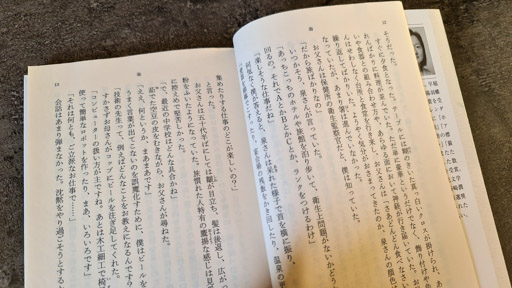
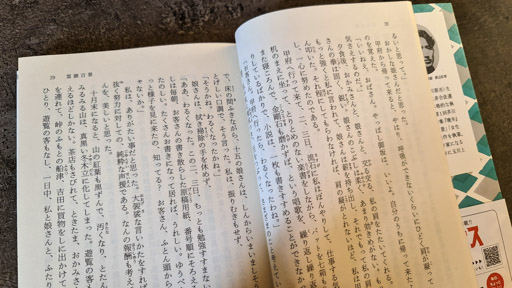
The two books mentioned above I translate more than I read. A natural follow-up for these are the short story collections by Yoko Ogawa (The Sea (海)) and Osamu Dazai (Run, Melos! (走れメロス)). I also read that Sayaka Murata and Otsuichi are very readable for Japanese language learners. So I’ll keep these in mind for my N2 level reading material. While studying Japanese at N3 level, I will try to read a few pages of these books to measure my progress.
When you can read a book without furigana you are well on your way to mastering Japanese.
Final Thoughts and Learning Method
As you can see I am focusing on reading comprehension and my JLPT N3 resource list is geared towards that. If you are learning Japanese for the same reasons then this list will help you. I would recommend everyone to switch to reading native material at this stage and to let the sentences in Japanese literature guide your learning journey. The textbooks should take a back seat here and help you become aware of grammar patterns or nuances that you would otherwise be unaware of.
As you read, you strengthen your vocabulary, grammar and kanji knowledge. Nothing is better for memorizing than to encounter words and patterns in the wild. If you come across a word or pattern you don’t know, read up on this item in a grammar book or a (kanji) dictionary with examples of common usage. This is then your study topic for the day.
You don’t have to look up everything you come across, instead it’s better to pick your battles so that the story stays interesting. If you get distracted, that’s fine too. Your way forward is by mastering more kanji, vocabulary and grammar. That means spending time immersing yourself in real texts.
I’m curious to hear about your Japanese learning journey in the comments below. Do you have any tips for other readers?
